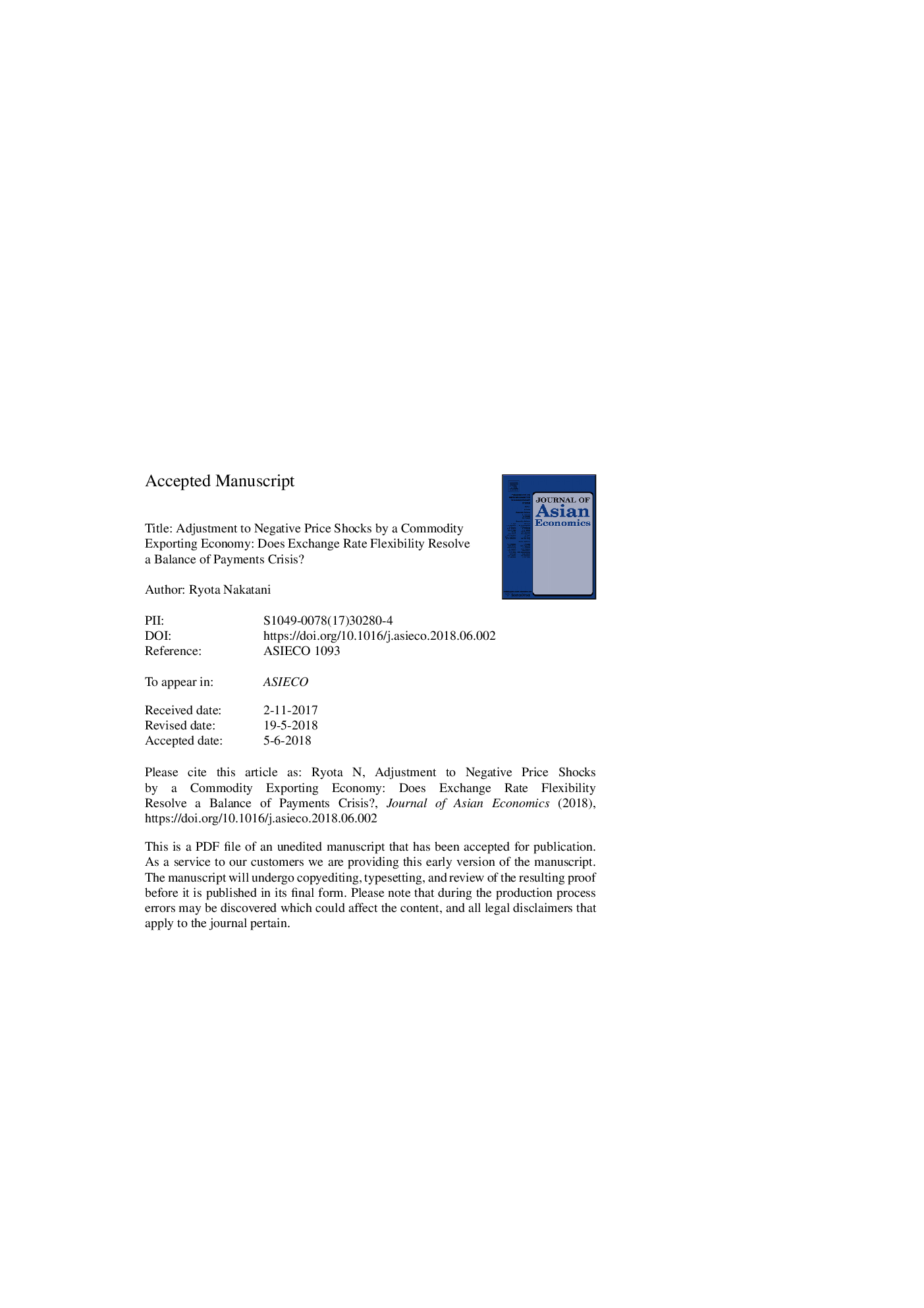| Article ID | Journal | Published Year | Pages | File Type |
|---|---|---|---|---|
| 7356372 | Journal of Asian Economics | 2018 | 33 Pages |
Abstract
Negative commodity price shocks can induce balance of payments crises in resource dependent economies. Governments often react by intervening against currency depreciation as, for example, in the case of Papua New Guinea in response to the commodity price shocks of 2014. We develop an original theoretical model to analyze the balance of payments impact of a commodity price shock under alternative exchange rate regimes: a flexible rate regime and a fixed rate regime with foreign exchange rationing. The balance of payments consequences are shown to depend on the elasticity of exports and imports with respect to the exchange rate. For the Papua New Guinea case, we estimate export elasticities for a variety of commodities (gold, silver, copper, oil, coffee, cocoa, copra, copra oil, palm oil, rubber, tea, logs, and marine products) as well as for imports. The results indicate that the Marshall-Lerner condition is satisfied for this resource-rich economy, implying that exchange rate flexibility may be practicable. We implement our calibrated model to conduct a counter-factual simulation and find that with a flexible exchange rate, foreign reserves would have been 20 percent higher three years after the shock than they were under the actual policy of exchange rate stabilization. In light of this, we argue the merits of greater exchange rate flexibility.
Related Topics
Social Sciences and Humanities
Economics, Econometrics and Finance
Economics and Econometrics
Authors
Ryota Nakatani,
